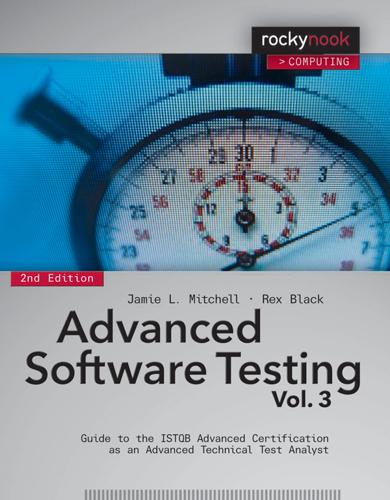fallacies of distributed computing
description: false assumptions programmers make who are new to distributed computing
6 results

Principles of Web API Design: Delivering Value with APIs and Microservices
by
James Higginbotham
Published 20 Dec 2021
Notice the explicit mention of the method (the procedure) and the ordered parameter list that results in a tight coupling between client and server: POST https://rpc.example.com/calculator-service HTTP/1.1 Content-Type: application/json Content-Length: ...Accept: application/json {"jsonrpc": "2.0", "method": "subtract", "params": [42, 23], "id": 1} Most RPC-based systems take advantage of a helper library and code generation tooling to generate the client and server stubs that are responsible for network communications. Those familiar with the fallacies of distributed computing recognize that failures can occur whenever code is executed remotely. While one of RPC’s goals is to make remote invocation behave as if it is calling a local procedure, network outages and other failure handling support is often incorporated into the client and server stubs and raised as an error.
…
Distributed Systems Challenges The journey toward microservices requires a deep understanding of distributed systems. Those not as familiar with the concepts of distributed tracing, observability, eventual consistency, fault tolerance, and failover will encounter a more difficult time with microservices. The eight fallacies of distributed computing, written in 1994 and still applicable today, must be understood by every developer. Additionally, many find that architectural oversight is required to initially decompose and subsequently integrate services into solutions. Teams unable to have architectural support may suffer from lack of architectural consideration in the design of their microservices, resulting in poor boundaries and overlapping team responsibilities that produces increased cross-team coordination.

Building Microservices
by
Sam Newman
Published 25 Dec 2014
Just taking a local API and trying to make it a service boundary without any more thought is likely to get you in trouble. In some of the worst examples, developers may be using remote calls without knowing it if the abstraction is overly opaque. You need to think about the network itself. Famously, the first of the fallacies of distributed computing is “The network is reliable”. Networks aren’t reliable. They can and will fail, even if your client and the server you are speaking to are fine. They can fail fast, they can fail slow, and they can even malform your packets. You should assume that your networks are plagued with malevolent entities ready to unleash their ire on a whim.
…
What happens when we have to handle failure of multiple separate services or manage hundreds of services? What are some of the coping patterns when you have more microservices than people? Let’s find out. Failure Is Everywhere We understand that things can go wrong. Hard disks can fail. Our software can crash. And as anyone who has read the fallacies of distributed computing can tell you, we know that the network is unreliable. We can do our best to try to limit the causes of failure, but at a certain scale, failure becomes inevitable. Hard drives, for example, are more reliable now than ever before, but they’ll break eventually. The more hard drives you have, the higher the likelihood of failure for an individual unit; failure becomes a statistical certainty at scale.

Hadoop: The Definitive Guide
by
Tom White
Published 29 May 2009
Launch the ConfigUpdater in one terminal window: % java ConfigUpdater localhost Set /config to 79 Set /config to 14 Set /config to 78 Then launch the ConfigWatcher in another window immediately afterward: % java ConfigWatcher localhost Read /config as 79 Read /config as 14 Read /config as 78 The Resilient ZooKeeper Application The first of the Fallacies of Distributed Computing[136] states that “The network is reliable.” As they stand, the programs so far have been assuming a reliable network, so when they run on a real network, they can fail in several ways. Let’s examine possible failure modes and what we can do to correct them so that our programs are resilient in the face of failure.
…
Thanks to its ZooKeeper underpinnings, Hedwig is a highly available service and guarantees message delivery even if subscribers are offline for extended periods of time. BookKeeper is a ZooKeeper subproject, and you can find more information on how to use it, and Hedwig, at http://zookeeper.apache.org/bookkeeper/. * * * [136] See http://en.wikipedia.org/wiki/Fallacies_of_Distributed_Computing. [137] For more detail, see the excellent article “Dealing with InterruptedException” by Brian Goetz. [138] Another way of writing the code would be to have a single catch block, just for KeeperException, and a test to see whether its code has the value KeeperException.Code.SESSIONEXPIRED.

Advanced Software Testing—Vol. 3, 2nd Edition
by
Jamie L. Mitchell
and
Rex Black
Published 15 Feb 2015
The Washington Post, January 14, 2013. http://www.washingtonpost.com/national/health-science/there-really-are-50-eskimo-words-for-snow/2013/01/14/e0e3f4e0-59a0-11e2-beee-6e38f5215402_story.html. Microsoft Windows Security Patches. Dan B. Rolsma. http://www.sans.org/reading-room/whitepapers/windows/microsoft-windows-security-patches-273. Fallacies of Distributed Computing Explained: (The more things change the more they stay the same). Arnon Rotem-Gal-Oz. http://www.rgoarchitects.com/Files/fallacies.pdf. Software Verification Tools Assessment Study, DOT/FAA/AR-06/54. Viswa Santhanam, John Joseph Chilenski, Raymond Waldrop, Thomas Leavitt, and Kelly J.

Seeking SRE: Conversations About Running Production Systems at Scale
by
David N. Blank-Edelman
Published 16 Sep 2018
As the use of horizontally scaled services across commodity hardware became more economical and commonplace than investing in “big iron,” distributed system principles became much more important to the proper execution of systems. Perhaps foremost among those principles is the conclusion drawn from the fallacies of distributed computing that anything can fail at any time, even things that used to be considered, in simpler environments, rock solid. Working at scale has another consequence, too: problems affect only “1 in a million” are painfully frequent when dealing with hundreds of millions or billions of events. In such an environment, minimizing the losses from expected failures becomes a critical design guideline.

Coders at Work
by
Peter Seibel
Published 22 Jun 2009
After participating in a failed attempt to commercialize the Project Genie system, Deutsch moved to Xerox PARC, where he worked on the Interlisp system and on the Smalltalk virtual machine, helping to invent the technique of just-in-time compilation. He served as Chief Scientist at the PARC spin-off, ParcPlace, and was a Fellow at Sun Microsystems, where he put to paper the now famous “Seven Fallacies of Distributed Computing.” He is also the author of Ghostscript, the Postscript viewer. In 1992, he was part of the group that received the Association for Computing Machinery Software System Award, for their work on Interlisp, and in 1994 he was elected a Fellow of the ACM. In 2002 Deutsch quit work on Ghostscript in order to study musical composition.